It’s about more than just the destination
I have learned that there are two types of travel books. Both are useful in their own way.
The first type are travel guidebooks. These are the ones from Rick Steves, Lonely Planet, Fodor’s, Rough Guide, and others, that give us a step-by-step, city-by-city, monument-by-monument view of our destinations. These are particularly valuable when we’re visiting a place for the first time. They are tools that help us navigate unfamiliar terrain.
The second type are narratives, written by people who have been somewhere for an extended period and learned something about the history, culture, and people. These are the “slow travel” books. They tell us about the experiences we could have in a particular place, the kinds of people we might meet, and the reactions the author had that we might share.
I enjoy the second type of travel books and the travel writers who create them, as much for their stories as for the lessons I learn from them. Here are three such books I can recommend. You may not have heard of any of them. All are by independent women traveling on their own. All three authors are from the UK.
Bon voyage. Boa viagem. Buon viaggio. Happy trails.
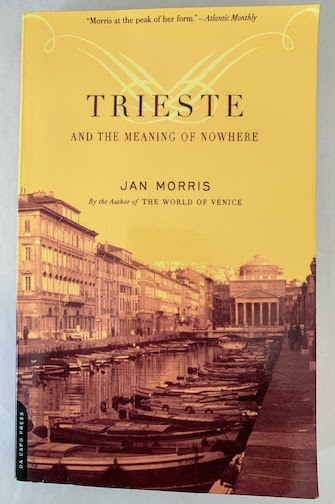
Trieste and the Meaning of Nowhere
By Jan Morris
I first read this book in 2022 and wrote an entire post about it. The idea of Trieste that Jan Morris writes about was fascinating and I’ve wanted to go there ever since. I just finished reading it again, and a few days after this post is published, we will be in Trieste.
Jan was born James Morris and in the 1970’s was one of the first people to do gender transition surgery. She visited Trieste in Italy many times, starting as 19 year-old James after WWII and continuing throughout her life.
She once wrote about travel writing, saying
“…the best travel writers are not really writing about travel at all. They are recording the effects of places or movements upon their own particular temperaments—recording the experience rather than the event, as they might make literary use of a love affair, an enigma or a tragedy.”
Trieste is that type of book. It is a fascinating, in-depth look at a city that is barely in Italy and that has changed hands multiple times over the centuries. Morris mixes history, culture, geography, and her own reflections on visits over half a century to create a complex portrait of a city that defies easy description.
Trieste and the Meaning of Nowhere, by Jan Morris.1
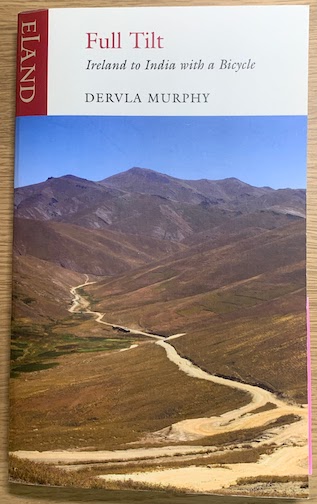
Full Tilt: Ireland to India with a Bicycle
By Dervla Murphy
I was hooked on this book the moment I read the blurb on the back cover:
“When Dervla Murphy was ten, she was given a bicycle and an atlas, and within days she was planning a trip to India. At the age of 31, in 1963, she finally set off and this book is based on the diary she kept while riding through Persia, Afghanistan and over the Himalayas to Pakistan and India. A lone woman on a bicycle (with a revolver in her trouser pocket) was an almost unknown occurrence and a focus of enormous interest wherever she went.”
This is a story of determination, tenacity, and curiosity. Dervla describes cycling through numbing cold and snow at the start of her journey, and through blistering heat at the end. She climbed thousands of feet to cross mountain passes. She rode on paved roads and dirt tracks. She describes the scenery with an artist’s eye for detail.
Some of the best stories she tells are about the people she met along the way. These were often poor peasants, living in remote villages, many of whom had never seen a white woman before. But they opened their homes to her – giving her food, water, and a place to sleep out of the elements. And while they did not speak the same language, they found ways to communicate, as she related in this passage:
“A language barrier does inevitably impede the collection of concrete information and the exchange of ideas, but it really is surprisingly flimsy when one wishes to arrange practical details and in unsophisticated societies it ceases to count where personal relationships are concerned. What can be an embarrassment when visiting Europeans, to whom elaborate signs may seem undignified, actually helps to overcome shyness and awe in primitive homes. When you ask for fried eggs by making noises like a hen after laying, followed by noises like something sizzling in fat, the whole household is convulsed with laughter and not only are fried eggs served, but you are unanimously elected as one of the family.“
Full Tilt: Ireland to India with a Bicycle, by Dervla Murphy2
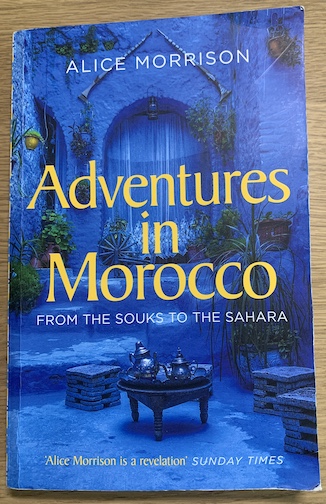
Adventures in Morocco
By Alice Morrison
Alice is a former BBC journalist who moved to Morocco in 2014 to participate in the Marathon Des Sables, an ultramarathon race across the Sahara desert. She had studied Arabic at university and was sufficiently fluent that she could move around Morocco in ways that most of us could not.
I bought this book shortly before our recent trip to Morocco. We both enjoyed it and felt it gave us a good introduction to Moroccan culture.
Like Dervla Murphy, Alice also was able to experience the hospitality of the Moroccan people she met far from the cities. In one extended section of the book, she described a trip she and a small group of Westerners took with a nomadic family who were moving their flock of goats from winter quarters to their summer pastures.
The family were Amazigh, an ethnic group usually known as Berbers, who were the original inhabitants of Morocco and much of northern Africa. They are a proud people – Amazigh means “free man”, and their symbol is a man standing with with his arms stretched up towards the sun.
“Maymoun and Hassan, [the] two youngest boys, had been appointed…as assistant guides, and I decided to lend Maymoun, the elder of the pair, my walking poles as a sign of authority. Oh, the delight. We had a serious ten minutes telescoping them to fit his height perfectly and checking that they were properly fixed. Off he ran to the head of the group, full of importance. Then something happened that illustrated for me the essence of the Amazigh ethos. The minute he got up to the top of our little caravan, he handed one of the poles over to his brother and explained to him how to use it. There is no pleasure without sharing. The two of them scampered off hollering and giggling and spearing every piece of goat poo they could find along the route – and there is a lot of goat poo along that route.”
We also watched Alice’s BBC TV documentary “From Morocco to Timbuktu”.
You’ll find many of her videos on YouTube. She is an excellent storyteller.
Adventures in Morocco, by Alice Morrison.3
Whether you go there or not
I hope these recommendations offer some inspiration. Perhaps it’s inspiration to visit a new place. But maybe it’s just a reaffirmation that people, no matter where you find them, are fundamentally good and decent.
That’s what I continually learn from traveling.
Until next time / Até a próxima vez
Mike
The Writer
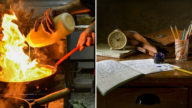
What travel books inspired you to visit or learn more about a place you’d never been? We’re due for a new one and are looking for suggestions. Leave us a recommendation in the comments below or via the Contact Us form.
- This is a direct link to bookshop.org. If you buy a book from them, you can designate that a portion of the sale price be given to an independent bookstore of your choice. Yes, you’ll pay a bit more than buying at Amazon, but the difference benefits independent bookstores, not a billionaire. We do not receive any affiliate payment if you buy a copy. If that changes in the future, we’ll let you know.
↩︎ - This is another link to bookshop.org
↩︎ - This is a direct link to Amazon.com, because the book is not available at bookshop.org. We do not receive any affiliate payment if you buy a copy. If that changes in the future, we’ll let you know. ↩︎
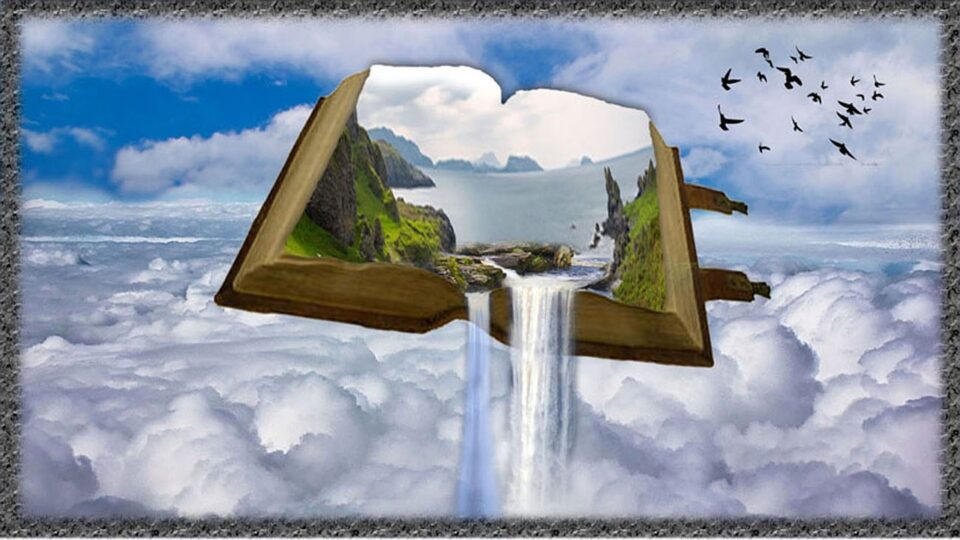

When you’re in Slovenia, if you have time, go to Bled. It’s a beautiful place to visit and the island cathedral is worth a visit. Carol and I walked around the lake and loved visiting the village. We were there in 2019 when we did our Rick Steves Eastern Europe trip.
Hi! When are you in Milan? We’ll be there the 22nd (flying in) and the night of the 28th.
Thanks for sharing these books! Travel, indeed, is most inspiring when you have a chance to interact with the people whose lives are centered in the culture, the smells and tastes, and the daily life of the places we find “exotic.” Enjoy!
David
You might enjoy The Tenth Island: Finding Joy, Beauty, and Unexpected Love in the Azores, by Diana Marcum. I enjoyed the history and funny stories about these islands that are very high on our “to visit” list. Safe travels!